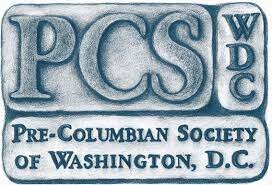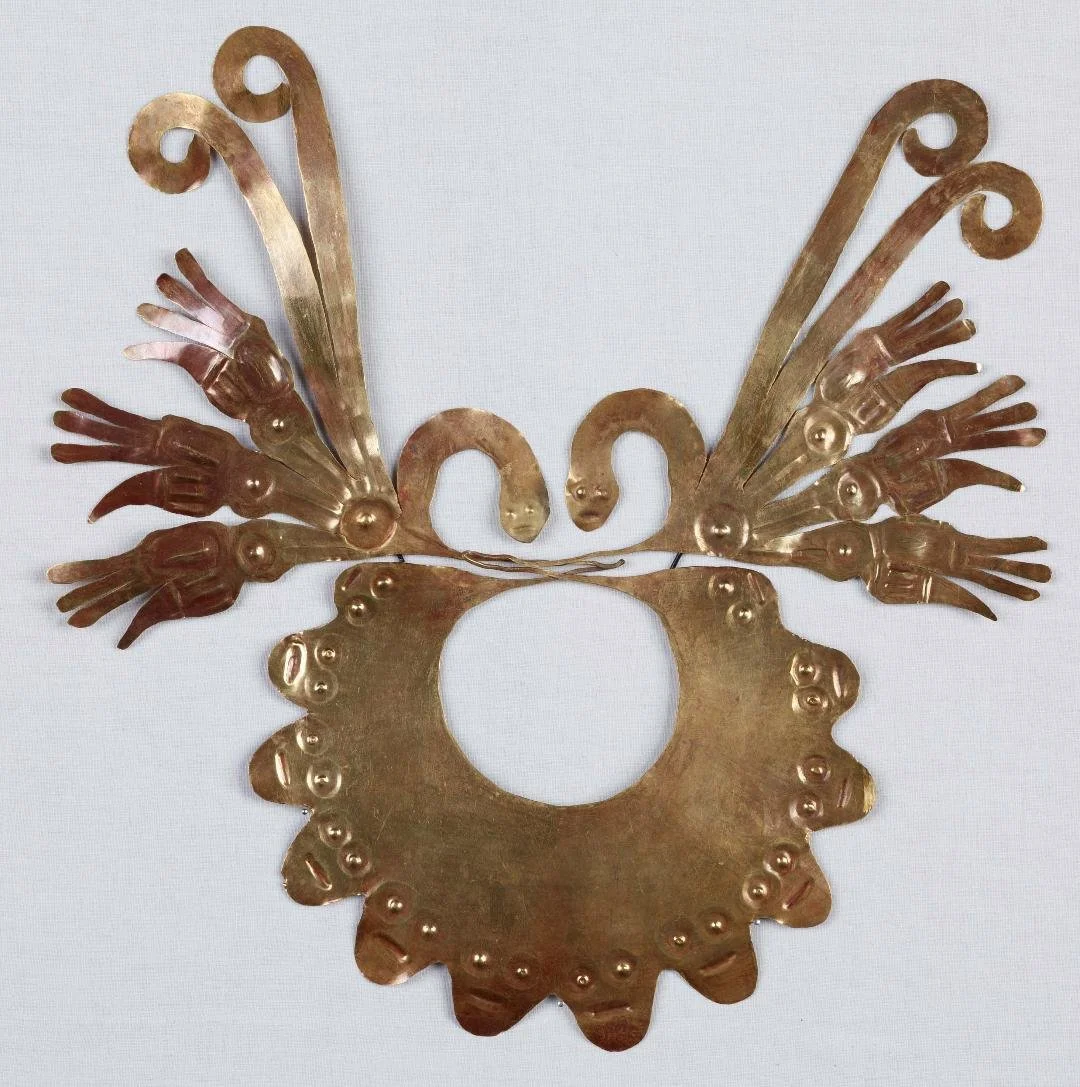Late Paracas and Early Nasca Hummingbirds, Hallucinogens, and Ecstatic Shamans
Lois Martin, Fordham University and City College of New York
Textile Museum N91.26 Nasca 2 gold mouth mask. The Textile Museum Collection at The George Washington University Museum
Hummingbird motifs abound in Late Paracas to Early Nasca (circa 200 BCE – 200 CE) iconography, in multiple media and in scales that range from house-fly-sized embroideries to jet-plane-sized geo-glyphs. One subset of Nasca hummingbird images faithfully represents the plant-pollinator biology of Brugmansia — a hummingbird-pollinated hallucinogen that today grows in highland Colombia. The plant is attested in Chavín imagery, and residue analysis on some Nasca vessels has suggested that some might have been used to inhale Brugmansia brews. Large-scale feasting and drinking took place at the Nasca ceremonial site of Cahuachi, and hallucinogen use has been proposed for multiple pre-Columbian societies. Other Paracas and Nasca images hint at the drug’s dramatic physiological effects on the human body: mydriasis, convulsive hyperextension, violent aggression, self-injury, and even death. These characteristics match the features of a commonly recognized figural type, the “back-bent figure,” with staring eyes, hyperextended posture, torso wounds, and a fan-shaped knife. While different scholars have proposed varying interpretations of this figure, Anne Paul and Solveig Turpin dubbed him the “Ecstatic Shaman” in 1986. These Brugmansia-related findings lend support to their interpretation, and suggest the means of his intoxication.
Lois Martin teaches studio classes in the Visual Arts Department at Fordham University, and an art history survey (“Arts of the Ancient Americas”) at The City College of New York (CUNY). She holds a MA in Romance Linguistics from the University of Michigan, an MFA in studio art from Brooklyn College, and an MA in Pre-Columbian Art History and Archaeology from Columbia University. She writes and lectures regularly on both ancient and contemporary art. Martin’s Andean research focuses on Late Paracas and Early Nasca iconography. Her background includes six years of work at the Brooklyn Museum, with their extraordinary collection of ancient Andean textiles. During this period, she published some short articles on one masterpiece, sometimes called “The Brooklyn Museum Textile,” 38.121, an Early Nasca textile with a three-dimensional border parade of 92 tiny figures, and the museum published a complete set of her line drawings of the border figures. In 2022, she revisited this topic for the Textile Museum Journal, for a special issue (Volume 49) on textiles and mathematics.
This lecture will be presented on Zoom. To register, click HERE. Please register before 4 PM August 1.

